The Wii U launch is nearing folks, and even though we know a ton about the console, there are still plenty of question marks, namely the way users will connect with each other online. Surprisingly, Nintendo has been taking their consoles online since 1995, far sooner than either Microsoft or Sony had even thought about making a gaming console. Click on through to take a tour of Nintendo’s foray into the world of online.
Super Famicom – Satellaview
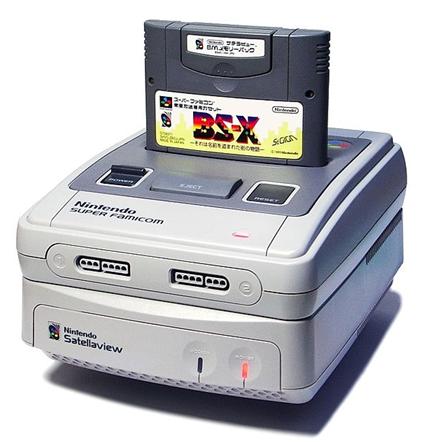
Did you know that as far back as the mid-90’s, Nintendo was already toying with the idea of a connected console? The Satellaview system was developed by Nintendo as an add-on adapter for the Super Famicom. The adapter came bundled with an 8M Memory Pak and the BS-X Game Pak.
The Satellaview wasn’t exactly online as we know it today. There was no online multiplayer. There was no voice chat. You couldn’t even send a text message to other players. No, the Satellaview was all about delivering extra content to players on a TV broadcast-like schedule. Users could get on their Satellaview at certain times of day to download game episodes. Digital magazines and software versions of NES and SNES games were also broadcast every day, giving users extra content to play while waiting for the next episode of their favorite game.
Non-game content was also distributed through the Satellaview, such as digital versions of magazines, music, and comedic performances. Nintendo also released beta versions of upcoming student projects on the service.
Sadly, the Satellaview experiment was eventually discontinued. From April 23, 1995 to June 30, 2000, content was broadcast to the console via the BS network. Following a disagreement between St. GIGA (the company responsible for broadcasting the signals to the console) and Nintendo in April 1999, the partnership between the two companies ended causing Nintendo to drop support for the console. St. GIGA continued to broadcast without Nintendo until June of the following year, until it ceased to support the Satellaview at all.
Nintendo 64 – 64DD
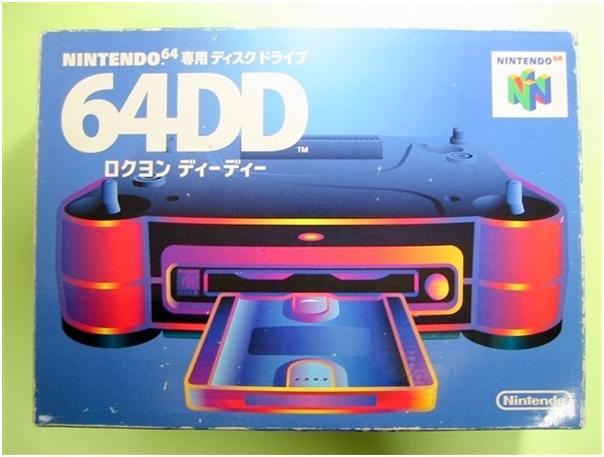
The 64DD was Nintendo’s next attempt to connect their consoles online. Sold through the online subscription service Randnet, the 64DD was Nintendo’s answer to the Compact Disk of the Sony Playstation. The 64DD attached to the bottom of the Nintendo 64, and allowed the console to read data off a new medium that was similar to a Zip Drive.
The Randnet service launched in December 1999 alongside the 64DD. Through the service, users were able to play against each other online, download games, and even listen to music. The service required a subscription fee of ¥2500 a month.
Not every game supported the Randnet service, and due to the rather limited success of the 64DD the service was rather short lived. In February 2001 the service was discontinued, with Nintendo buying back all of the Randnet related hardware.
Game Boy Color/Game Boy Advance – Mobile Adapter GB
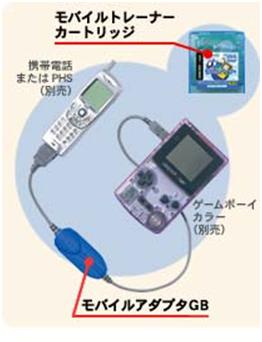
On January 27, 2001, Nintendo released a peripheral that allowed users to connect their GBC or GBA to compatible mobile phones to play games wirelessly through a service known as Mobile System GB. The adapter was not released outside of Japan due to the lack of commercial success.
Only a handful of games supported the adapter, the most popular of which being Pokémon Crystal. Because of this, and perhaps because of the general public’s unwillingness to connect their mobile consoles to their phone to play games, the service was unsuccessful and as stopped only a year later. The Mobile System GB service was closed down on December 14, 2002, however it is still possible to link with other users via a peer-to-peer network.
GameCube – Broadband/Modem Adapter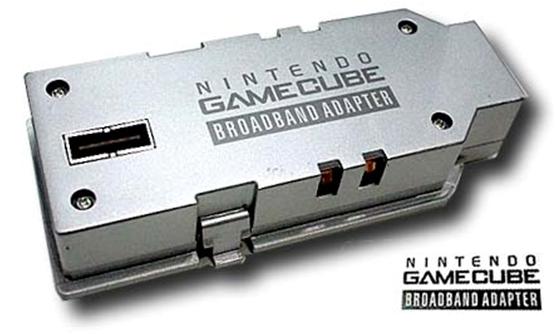
Perhaps Nintendo’s biggest failed promise was the prospect of including online services to the GameCube. Prior to the launch of the console, Nintendo talked of allowing gamers to play multiplayer games together through the use of a peripheral that connected to the bottom of the console. There were only four games released that took advantage of the adapters ability to connect to other users online, with an additional three that used the adapter to connect for LAN play.
Prior to the launch of the GameCube, sources close to IGN were quoted as saying that Nintendo’s online strategy for the GameCube was solid and not something Nintendo has glanced over. If releasing seven games for the peripheral counts as solid, then Nintendo was right on track with that one.
Nintendo DS – Nintendo Wi-Fi Connection

With Nintendo’s fourth (third?) generation handheld came their first true attempt to connect players via the internet. The Nintendo DS didn’t immediately launch with the capability to play games online, that feature launched one year later on November 14, 2005 with the release of Mario Kart DS. The service features worldwide leaderboards, matchmaking, as well as tournament, and requires a unique twelve digit number called a Friend Code to play with specific players.
Much to the disdain of many gamers, unlike Xbox Live or Steam, gamers are unable to interact with specific players without first exchanging a Friend Code. This usually meant a third party service such as an internet message board would have to be used to connect with players on for many games where a matchmaking service was unavailable. The Pokémon games are an example of this as the only way to battle an opponent via Nintendo Wi-Fi was to exchange a friend code beforehand.
Even through all the shortcomings of the Nintendo Wi-Fi Connection, the service has been a relative success. Games such as Dragon Quest IX and Tetris DS have really managed to take full advantage of the service’s easy access and absolutely free of charge internet connectivity. The Nintendo DS would prove to be a great testing ground for what would Nintendo would bring to their next home console experience.
Nintendo Wii – Nintendo Wi-Fi Connection
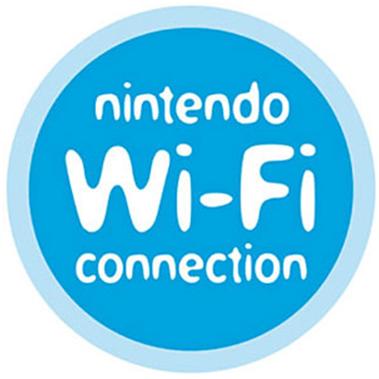
The Nintendo Wii was the next Nintendo console to integrate online its arsenal of features, but much like the DS, the main features of the service were not integrated until after the launch of the console itself. Although the ability to download games via the Virtual Console was present from the genesis of the console, it wasn’t until Pokémon Battle Revolution was released on June 25, 2007 (December 14, 2006 in Japan) until online multiplayer was fully realized on the console.
The Wii supported many features such as voice chat and the Wii Message Board throughout its life cycle, but compared to other services at the time from Sony and Microsoft, it was very apparent that Nintendo was falling behind in the times. As of this writing, only thirteen games support the Wii Speak peripheral, and while the Wii Speak channel can be used independently of any game, the feature cannot be used concurrently during gameplay, and can be only used on the system menu.
Perhaps Nintendo Wi-Fi’s biggest feature has been the Virtual Console/Wiiware combo that allowed gamers to download games directly to their console from the service. For the first few years of the Wii’s lifecycle, there would be a few games from each of Nintendo’s legacy consoles available for download each week. Aside from having to play the games with a controller not necessarily intended for the game, the emulation of each title has been spot on. Original content has also appeared on the service’s WiiWare channel, with many notable games finding their way to the Wii because of the downloadable channel.
In short, the Wii online experience was a small stepping stone for what Nintendo hoped to achieve with their later consoles. Nintendo has been mainly hindered by their family friendly image that they need to maintain, which has at times driven away the more ‘hardcore’ group of gamers they had previously catered to in the past. If anything, the Wii was a great learning experience for Nintendo, and hopefully they take away a lot from the strengths and weaknesses of the console.
Nintendo 3DS – Nintendo Network
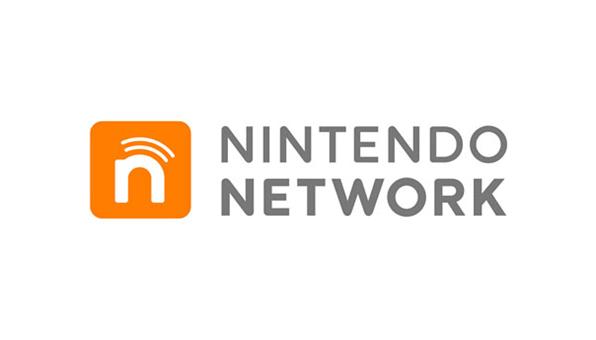
Following the trend of not launching with a full online experience, the Nintendo 3DS did not feature a true online experience until June 6, 2011. This, compiled with the console’s high price point lead to the 3DS really struggling to gain much traction for its first few months on the market. Ever since the July 28, 2011 price drop, it has been smooth sailing for the console and Nintendo hasn’t looked back since.
The Nintendo Network has been a mostly a win for Nintendo in the grand scheme of things. Back from the Wii are the Virtual Console and 3DSWare services that bring both retro and original content to the device. Improved on from the Wii however, is fact that instead of having each game generate a random friend code, only a console specific code is required to connect with friends. Not quite as easy as a universal username, but much easier than having to remember a twelve digit code for each game played.
As of right now, there is still no way to connect with friends via voice chat outside of a few specific games supporting it in game. It would be nice to have a system interface that sat on top of each and every game that allowed this, much like what Microsoft does with Xbox Live. Another neat feature that would take advantage of the hardware beautifully would be to allow video chat perhaps in-between matchmaking sessions or a full on video chat app.
The Future
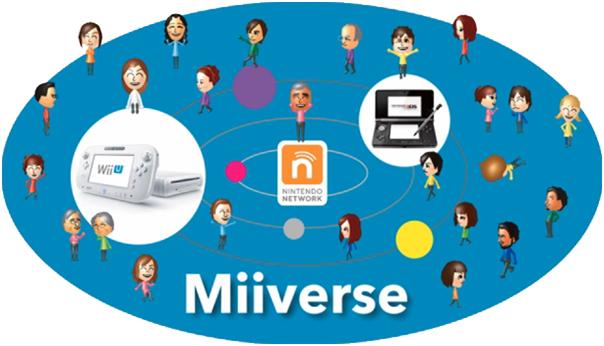
The Nintendo Wii U is less than a month away, but already many gamers (including myself) are weary of Nintendo’s online direction. Nintendo has kept its cards close to its chest with what they plan to offer in terms of online connectivity outside of the MiiVerse, and that has me scared for what is to come. In my opinion, Nintendo cannot afford to lose ground in the online space, because more and more every day the world is turning into an increasingly online marketplace. One only has to look at the success of Facebook and Twitter to realize where the industry is heading, and I am worried that Nintendo doesn’t quite understand where the industry is trending.
I could be wrong, and the Miiverse could be tomorrow’s biggest thing, but as my favorite game developer, I only wish to see Nintendo succeed. Nothing would give me more joy than to see a new Super Smash Bros. that fully takes advantage of every conceivable online feature that Nintendo can muster and completely blows every other online multiplayer game out of the water. And why not? To me, a well implemented Smash Bros. online title is much more appealing than any Call of Duty game that Activision could throw at me. Nintendo, the ball is in your court.
